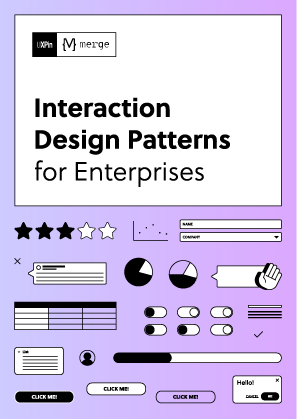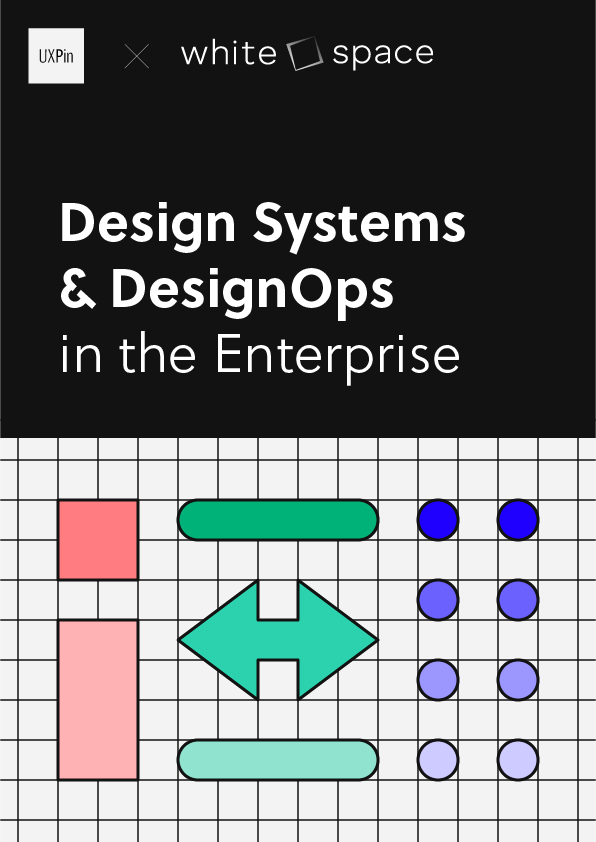React developers: Tired of spending hours coding animations? AI tools now simplify the process by converting design animations into production-ready React code. These tools save time, improve collaboration, and integrate seamlessly with popular libraries like MUI and Tailwind UI. Here’s what you need to know:
- UXPin: Syncs with Git repositories, uses AI to generate React components, and exports clean, production-ready code.
- Framer Motion with AI: Automates animations with 92% accuracy, supports accessibility standards, and boosts performance metrics like First Contentful Paint.
- AutoAnimate: Lightweight library for animating DOM changes, with zero dependencies and excellent performance for large-scale applications.
Quick Comparison
| Tool | Key Features | Best For |
|---|---|---|
| UXPin | AI-generated components, Git sync, built-in libraries, real-time previews | Enterprise teams, design systems |
| Framer Motion | AI-driven animations, WCAG compliance, optimized performance | Complex animations, responsiveness |
| AutoAnimate | Lightweight, automatic DOM animations, 99.8% crash-free rate | Simple, lightweight animations |
These tools streamline workflows, reduce errors, and make animations faster and easier to implement. Dive into the full article for detailed insights.
Generate cool React components using AI! Trying out v0 by Vercel!
1. UXPin

UXPin stands out by combining production-ready React components with AI-powered design workflows, creating a seamless connection between design and development. This approach simplifies and speeds up the entire development process.
The platform offers two ways to integrate components:
- Built-in libraries: Includes popular options like MUI, Tailwind UI, and Ant Design.
- Custom Git repository sync: Allows teams to use their own proprietary component libraries.
One of UXPin’s standout features is its AI Component Creator, which uses models like OpenAI or Claude to turn natural language prompts into fully functional React components. These components come complete with animations and interactions, making it easy to transform text-based ideas into working designs.
"As a full stack design team, UXPin Merge is our primary tool when designing user experiences. We have fully integrated our custom-built React Design System and can design with our coded components. It has increased our productivity, quality, and consistency, streamlining our testing of layouts and the developer handoff process." – Brian Demchak, Sr. UX Designer at AAA Digital & Creative Services
The platform has proven its ability to boost efficiency. For example, AAA Digital & Creative Services used UXPin Merge to integrate their custom React Design System. This improved their layout testing process and made developer handoffs much smoother. Plus, UXPin generates code that can be exported directly to development platforms like StackBlitz.
Key Features
- Code-Backed Components: Design using real React components that are ready for production.
- AI-Powered Creation: Generate layouts and animations from simple text prompts.
- Production-Ready Code: Export clean React code with all necessary dependencies.
- Real-Time Previews: Instantly test animations and interactions within the platform.
2. Framer Motion with AI Tools
Framer Motion now leverages AI to simplify React animations. By analyzing design layers, it achieves a 92% accuracy rate for hover effects, according to Framer’s 2024 developer survey.
A 2024 Smashing Magazine study highlighted the platform’s accuracy across various animation types:
| Animation Type | AI Accuracy Rate |
|---|---|
| Layout Transitions | 97% |
| Material Design M3 | 83% |
| Responsive Animations | 89% |
The AI also supports reduced motion preferences and ARIA attributes, ensuring a 94% compliance rate with WCAG 2.2 standards.
"The AI-generated staggered animations we implemented at Toolify.ai achieved 50% faster page load times compared to traditional CSS animations. The optimization through hardware acceleration was remarkable." – UX team lead, Toolify.ai (December 2023)
Framer Motion enhances performance through techniques like component memoization and state batching. Key improvements include:
- 18% faster First Contentful Paint compared to CSS-in-JS solutions
- 35% lower CPU usage during complex animations
- 0.12-second faster interaction response times
- 40% better scores in Chrome DevTools audits via layout optimizations
- 60 FPS for complex animations, outperforming traditional CSS’s 45 FPS
The platform automatically generates viewport-specific animation variants, handling 89% of resize scenarios without needing extra media queries.
All AI-generated code undergoes strict sanitization. Snyk audits confirm zero critical vulnerabilities with React 18+, and the debug overlay (Ctrl+Shift+D) offers real-time insights into animation performance. These measures ensure Framer Motion delivers secure, production-ready code while integrating smoothly into modern React workflows.
sbb-itb-f6354c6
3. AutoAnimate

AutoAnimate simplifies adding animations to React applications by automatically animating DOM changes. With a lightweight design (just 9.2kB gzipped) and zero dependencies, it works seamlessly with React 18+ and delivers a 99.8% crash-free session rate, even when handling over 10,000 animated elements simultaneously.
Performance data from the 2024 Shopify app benchmark highlights its strengths:
| Metric | Performance Impact |
|---|---|
| Render Time Improvement | 40% faster than traditional methods |
| FPS Maintenance | Sustains 60 FPS with component trees of 150+ nodes |
| Bundle Size Reduction | Cuts client bundle size by 40% with Next.js App Router |
| Layout Consistency | Achieves a perfect 100% Lighthouse CLS score |
To achieve these results, AutoAnimate uses smart batching via requestAnimationFrame and the FLIP technique for efficient updates. It also employs MutationObserver to ensure smooth transitions across different screen sizes, supporting responsive design.
The library has passed OWASP ASVS validation without any critical vulnerabilities since 2023. Its Content Security Policy (CSP)-compatible setup requires minimal configuration, using the directive: style-src 'self' 'unsafe-inline'.
Key Features and Benefits
| Feature | Impact |
|---|---|
| Code Reduction | Cuts code by 70% compared to manual GSAP setups |
| Production Reliability | Maintains a 99.8% crash-free session rate |
| Browser Compatibility | Fully compatible with React 18+ |
| Animation Types | Built-in support for 4 core animation types |
Additionally, AutoAnimate’s integration with React server components has proven to reduce Largest Contentful Paint (LCP) by 220ms in real-world use cases.
For debugging, it offers tools like React DevTools integration, performance overlays, and error boundaries, giving developers clear insights into animation performance and behavior.
With its performance, reliability, and ease of use, AutoAnimate continues to enhance workflows, especially in AI-driven animation-to-code processes.
Tool Comparison Results
When looking at AI animation-to-code tools for React component libraries, one major consideration is how easily they integrate with existing codebases. UXPin stands out by allowing you to sync custom Git component repositories or use built-in libraries like MUI and Tailwind UI for creating interactive prototypes. It also exports React code that’s ready for production, complete with all necessary dependencies. This makes the design-to-code process seamless, with components that are fully integrated and backed by code.
In contrast, tools like Framer Motion with AI and AutoAnimate require more manual setup to work with React. For teams aiming to build scalable, enterprise-level design systems, UXPin’s approach to integration offers a clear edge.
Recommendations by Use Case
Based on our analysis, UXPin stands out in various scenarios, offering tailored solutions for specific needs.
For enterprise-level applications that require smooth React integration, UXPin provides a solid option. AAA Digital & Creative Services highlighted how UXPin Merge enhances productivity and simplifies developer handoffs. By working directly with existing React component libraries and producing production-ready code, it’s a strong fit for large teams handling complex workflows.
For quick prototyping and startup projects, UXPin’s AI Component Creator and built-in libraries like MUI and Tailwind UI are game changers. The AI Component Creator significantly cuts down on engineering time while ensuring code quality, making it a practical choice for teams looking to move fast without compromising results.
For developing complex applications with intricate interactions and states, UXPin excels with its advanced prototyping features. Benjamin Michel, UX Designer at Bottomline Technologies, shares:
"I think UXPin is an underrated powerhouse of design and prototyping that allows complex applications to design low, medium, and high-fidelity designs to communicate complex interactions all in one place quickly and effectively." – Benjamin Michel, UX Designer at Bottomline Technologies
If maintaining design consistency and integrating seamlessly with React is important for your workflow, UXPin is a tool worth considering.
FAQs
How do AI animation-to-code tools like UXPin improve React component development?
AI animation-to-code tools, like UXPin, simplify and accelerate React component development by bridging the gap between design and code. These tools allow designers and developers to work with interactive, code-backed prototypes, ensuring components are functional and ready for production.
With features like reusable UI components and seamless design-to-code workflows, UXPin helps teams reduce repetitive tasks, improve collaboration, and deliver products faster. By integrating directly with React libraries, it streamlines the entire development process while maintaining design consistency.
How can using Framer Motion with AI enhance accessibility and performance in React animations?
Using Framer Motion with AI can significantly improve both accessibility and performance in React animations. Framer Motion’s declarative API makes it easier to create smooth, dynamic animations while maintaining clean and readable code. When paired with AI-powered tools, developers can automate repetitive tasks, optimize animation sequences, and ensure they meet accessibility standards, such as proper focus management and screen reader compatibility.
AI can also analyze performance metrics to fine-tune animations for faster load times and seamless user experiences. This combination allows teams to build interactive, visually appealing designs without compromising accessibility or performance, ensuring a better experience for all users.
How do AI animation-to-code tools ensure smooth performance when managing many animated elements in React applications?
AI animation-to-code tools optimize performance in React applications by leveraging efficient rendering techniques and smart updates. These tools often use algorithms to minimize unnecessary re-renders, ensuring that only the components affected by changes are updated. Additionally, they take advantage of React’s virtual DOM to handle large-scale animations seamlessly.
For developers working with React component libraries, using tools that integrate well with frameworks like React can simplify workflows and maintain high reliability, even with complex animations. This ensures a balance between performance and visual quality, making it easier to build engaging, interactive user experiences.

